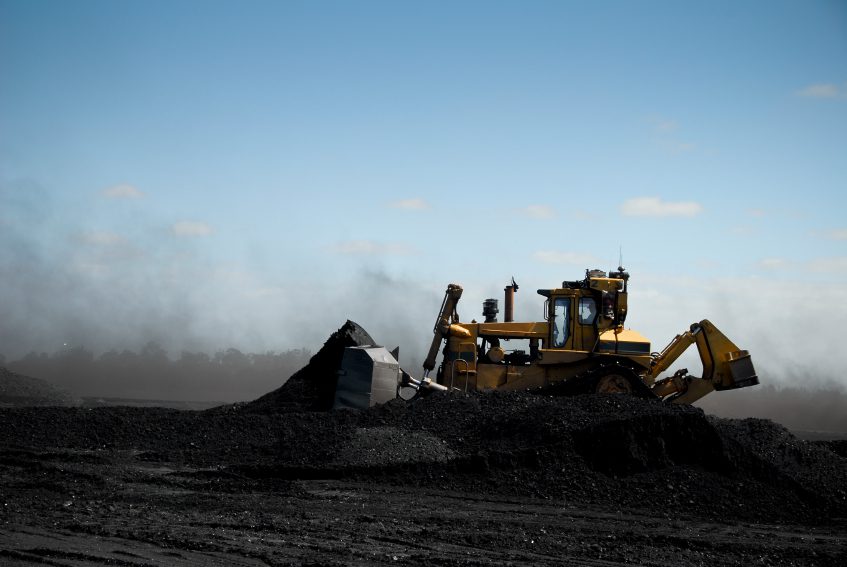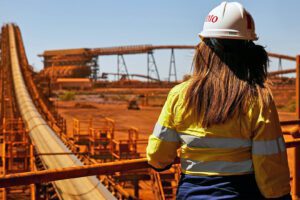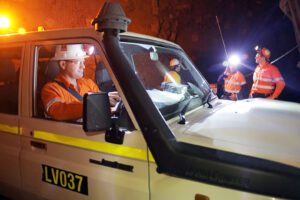Coal remains one of the primary sources of energy and is likely to remain an important energy resource well into the future. As metallurgical coal also remains an important commodity to produce steel it is also predicted to be in use for many years to come.
With the production of coal, however, like every other mining activity, comes the risk of respirable dust in the workplace. Respirable dust consists of airborne coal dust particles that are inhaled, to form deposits within the airways and lungs of miners. It’s been a known occupational hazard within the industry for a long time, and is the leading cause of coal workers’ pneumoconiosis, or “black lung disease.”
Pneumoconiosis is specific to the coal industry, however, there are many new cases of mixed- pneumoconiosis that affects those who work in other types of mining not strictly coal related. In 2015, Australia saw its first confirmed case of black lung disease since the 70’s.
In China, over 6000 miners each year die from pneumoconiosis, and it kills over 1000 every year in the US, however, in Australia it has been almost eliminated since the 1960s. But unfortunately, it is beginning to re-emerge at an alarming rate. With over 21 new cases reported in the last three years, there is a new global call for mine operators to do much more to eliminate the cause of the disease.
In a 2017National Pollution Inventory report, of the top 20 dustiest coal mines in Australia, 17 were in Queensland. Of the top 20, 9 of them, which account for 40% of the state’s total industrial air pollution, were all located in Queensland. This level of air pollution is unacceptable, contributes to many health risks, and is directly linked to pneumoconiosis.
Current regulations mean that “Mines need to ensure that risk of injury or illness to any person resulting from operations is at an ‘acceptable’ level. This means that the level of risk must be not only within acceptable limits but also as low as reasonably achievable.”
Unfortunately, even though these regulations are in place, the disease appears to have re-emerged, meaning mine operators now need to go above and beyond regulation if they want to ensure dust levels are lowered enough to once again remove the risks of black lung disease from existence.
Current strategies to stop new cases of black lung from emerging are based on limiting exposure to mass dust concentration, however, new research data shows that this may no longer be enough.
What causes Black Lung?
During many forms of extraction and processing like drilling, crushing and screening, blasting, tipping and loading, excavation, transport, and many other activities within mines to produce and process rock and mineral based products, dust particles are created and become airborne. Those working in the vicinity of this broad range of activities may become exposed to the dust particle. These particles can have different chemical compositions and include particles of coal dust, crystalline silica, lead, cadmium, asbestos, or arsenic depending on the geology of the rock, and types of extraction and processing techniques used.
What Is Being Done to Prevent Pneumoconiosis via Dust Management?
When new confirmed cases emerged in 2015, there was a national uproar, with people seeking out why the disease had suddenly re-emerged. Many questions were raised, including “Was pneumoconiosis there all along, but just not reported? Which posed questions about internal cover-ups by global mining giants and raised concerning questions about what had changed within the industry to allow the disease to rise from the ashes like a coal dust-coated phoenix.
In 2016, BHP Billiton told a parliamentary committee that apart from the new cases brought to the table in Queensland, there had been no further examples of pneumoconiosis discovered anywhere within its global operations in decades. At the hearing, the global mining giant vowed to change its internal regulations on coal dust exposure limits to below three micrograms per cubic metre.
The return of the disease to Australia has forced everyone from BHP, Rio Tinto, Anglo Coal, BMA and the Gladstone Ports Corporation to identify new measures that will reduce workers’ exposure to coal dust.
It was recommended in late 2017 in the “Inquiry into occupational respirable dust issues” Report No. 4, by the 55th Parliament Coal Workers’ Pneumoconiosis Select Committee that a new category of workers, defined as ‘coal worker’, should be established to include workers involved in the transportation and handling of coal outside a ‘coal mine’ including rail workers (e.g.: coal train loaders and drivers), port workers (e.g.: dozer, stacker/reclaimer, and ship loader operators), power station workers, and maritime workers (e.g.: tug and line boat crew).
Dust Management Is the Problem, But What Is the Solution?
The 2017 “Inquiry into Occupational Respirable Dust Issues” Report No. 4, by the 55th Parliament Coal Workers’ Pneumoconiosis Select Committee showed the mining industry in Queensland had not been required to provide its exposure monitoring data to DNRM in any systematic fashion.
The re-identification of CWP in Queensland has implemented changes to reporting requirements under the CMSHA, so coal mines are mandated to submit their monitoring information to the mines inspectorate for inclusion in an all-inclusive dust database and must notify the inspectorate of any recorded exceedances of the OEL.
At the 2017Queensland Mining Industry Safety and Health Conference, occupational hygienist and mines inspector Mark Desira presented the results of a recent survey of the industry, which asked SSEs to advise the number of samples collected in the past five years. Data was provided by 36 operations, representing 62.5% of the industry. Of the 4,500 results collected, 97% were found to be below the nominal OEL.
These results suggest there is far-reaching compliance across the industry, however, previous studies have raised questions as to whether examples of non-compliance may be unduly concentrated at sites with a higher silica concentration and associated health risks.
Specifically, the results of a study of the RCS exposure measurements and lung function tests of 47 Queensland quarry and sandstone workers, found that one in four workers were exposed to RCS above the SWA-ES [Safe Work Australia Exposure Standard], and more than one in ten were being exposed at a concentration of more than twice this limit.
http://www.parliament.qld.gov.au/Documents/TableOffice/TabledPapers/2017/5517T1855.pdf
Controlling the Risk of Dust Exposure to Workers in Mines
The risk of mine workers being exposed to hazardous dust particles needs to be controlled using a grading of controls that have an emphasis on higher-order controls like elimination, substitution and isolation of the hazard as the most effective means of treating the hazard.
The Queensland Mining and Quarrying Safety and Health Regulation 2017includes a specific requirement for controls to be applied in this order.
Hierarchy of controls
Hazard controls should be applied in this order:
- Elimination—remove the hazard, or the need to perform the hazardous activity.
- Substitution—substitute a safer alternative.
- Separation/isolation—isolate or separate people from the hazard by use of barriers, distance or time.
- Engineering controls—redesign or modify tools or equipment.
- Administrative controls—use training, rules, procedures to reduce the risk of the hazard.
- Personal protective equipment—provide fit-for-purpose protective equipment.
More than one control may need to be used to sufficiently control the threat. Controls used must be sustained to guarantee they continue to remain operative.
Dust Control Measures
There are many ways in which mine operators must control dust on their sites. Through adopting processes to generate less dust and treating dust at its source or during transport or transmission paths, assists in its elimination.
Substitution of current methods with less hazardous methods is another way in which sites can eliminate the problem. Using pellets instead of powders and replacing sand with garnet when blasting is also a good start.
Physical barriers between the dust generating area and the worker are commonly used but can also pose costly overheads for operators. Enclosed cabins are the most frequently used barrier, and more recently, remotely operated machinery is becoming more widespread.
Making sure all higher order controls are adopted is vital to evolving the industry, and when it comes to Personal Protective Equipment (PPE), you are responsible for making sure you wear the appropriate safety gear for the task at hand.
Operators must ensure that every effort is made to train employees how to correctly use PPE, which includes comfort and fitment testing before use. Everyone on site should be responsible for the correct storage and maintenance of PPE. If you see Personal Protective Equipment incorrectly stored, let someone know, or take a minute out of your day to fix it if you can.
Ultimately the best way to manage dust is by creating new practices, innovative technology, and a whole new mindset that focus on long-term process-changing options, rather than band-aid solutions.
As a worker in the mining and resources sector, you have a responsibility to protect yourself and your colleagues from hazards. As an employer in the mining and resources sector, you have a responsibility to protect everyone in your organisation from risks associated with your everyday operations.
It takes true commitment to change the processes to eliminate something a second time around that an entire national industry believed had been eradicated decades ago. Without an infinite commitment on all levels of the mining and resources sector, nothing will change.













Add Comment